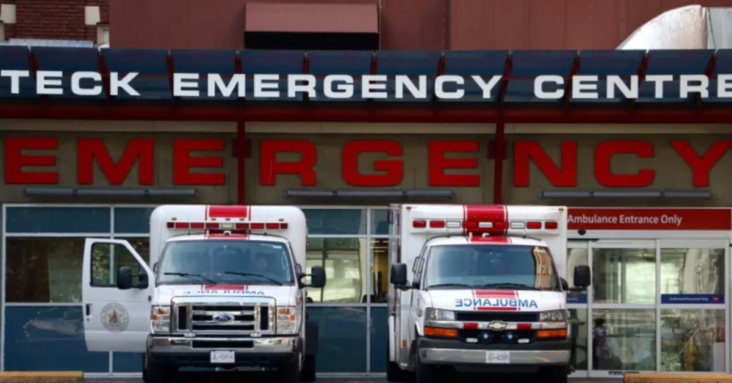“You don’t need to be a genius to know that the same system that affects the period, is the one that impacts fertility and pregnancy,” he said.
‘They’re all so, so sick. It’s just this general decline in the population’
A paramedic of 18 years from Southern Ontario, who refused to divulge her full name because of fears she could lose her job, said the call volume for paramedics was reduced during the first months of the pandemic. “Everybody was so scared, they were all staying home. But we were not seeing people sick with COVID-19,” she said.
The paramedic said they were busier during that winter, but the call volume was still lower than previous years. “The only thing that was different than a normal flu season was that patients’ oxygen saturation would be lower. But we never saw any young people. These were all 80 year-old, bedridden people [who] were dying,” she said.
The paramedic said during the third wave of COVID-19, they kept hearing on the news that “Toronto hospitals were overwhelmed and they were using ambulances to transport people to surrounding hospitals.” But after they signed up for a hospital transfer shift, they would “sit there for 12 hours.”
“I did one transfer out of a Brampton hospital, but that was it. They eventually cancelled the program because nobody needed to be transferred out of the hospital,” they said. “But then I would go home and hear on the news that hospitals were overwhelmed, and yet I had just been to the ICU that day, and seen that the place was half empty. And I thought ‘what is going on here? Where are all the COVID patients?'”
The paramedic also claimed that screening for COVID-19 was extremely broad, and any patient with “nausea, vomiting, diarrhea, shivers, or shortness of breath” was labelled as COVID positive.
“And that’s considered to be everybody. So if you had a breathing problem because of chronic obstructive pulmonary disease, you were considered COVID positive. I don’t know if that’s how it worked for the hospital numbers, but that’s how we would treat it when we were dispatched,” they said.
The paramedic said during the Omicron wave of last winter, when “everybody I knew got sick with COVID,” virtually nobody was sick enough to be transferred to hospitals.
“I would say I saw three people that maybe died in 2021, but they were all over 75 years-old and had all the comorbidities. Three people for a whole year. I work full-time in a busy service where I’m doing eight calls a shifts,” she said.
But the paramedic said since the vaccine was rolled out, they have seen a large increase in young people experiencing chest pain right after getting vaccinated. They have also seen an uptick in middle-aged people suffering from strokes, and an “enormous amount of people in their 50s and 60s with new-onset heart arrhythmias.”
“I have to do a very thorough history. They’ll tell me these problems started a month ago, and then a couple questions later they’ll say they got their fourth vaccine dose around that same time. I can’t tell you how many healthy, older people have gotten their third and four doses, and now they’ve got these new cardiac issues. It just seems really obvious to me. I don’t see unvaccinated people getting this sick.”
The paramedic also claimed to be seeing older people with chronic infections that “just keep getting worse and worse.”
“They tell me ‘I just keep getting worse. I don’t know what’s going on. I can’t get up anymore. I’m weak, I’m nauseated all the time, and I’ve got his chronic infection I can’t seem to recover from.'”
“I’ve been working for 18 years, and the majority of my patients now are in their last few weeks of life,” the paramedic said.
“They’re just dying. They’re all so, so sick. It’s just this general decline in the population.”




